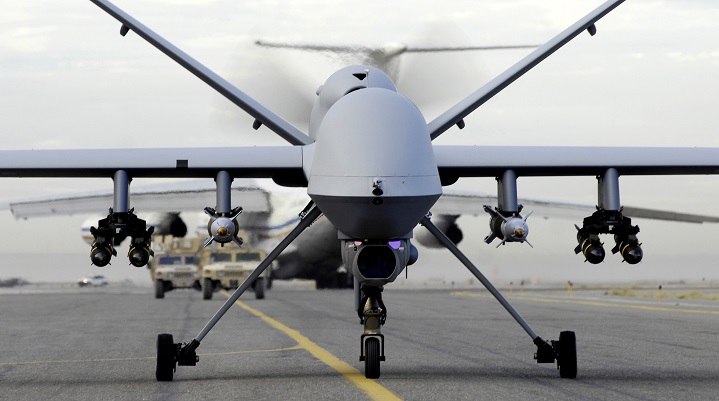Training solutions for operators of United States Armed Force’ surveillance and killer drones topped the list of equipment recently sold by defence and security company CAE to military services around the world.
The global company, which has regional operations in Canada, yesterday said it has won in excess of $120 million in defence contracts to provide a range of training services and simulation product upgrades for global military customers.
“Our large installed base of existing training devices and simulation systems provide ongoing upgrade and update opportunities along with long-term service and support business,” Gene Colabatistto, CAE’s group president, for defence and security, said in a statement yesterday. “We are pleased to continue our support of the United States Air Force as their training partner on the MQ-1 Predator/MQ-9 Reaper remotely piloted aircraft, which is the world’s largest RPA training program.”
RELATED CONTENT
CAE-Draken partnership expands beyond Canada
Armed drones to play greater role in Air Force
The U.S. Air Force (USAF) has awarded CAE USA a contract for option year three on the MQ-1 Predator and MQ-9 Reaper remotely piloted aircraft aircrew training services and courseware development program.
CAE USA works closely with active-duty USAF personnel to provide classroom, simulator and live flying instruction for more than 1,500 pilots and sensor operators who train annually at Holloman AFB, New Mexico; Creech AFB, Nevada; March Air Reserve Base, California; and Hancock Air National Guard Base, New York.
The MQ-9 is the first hunter-killer UAV designed for long-endurance, high-altitude surveillance. The MQ-9 is a larger, heavier, and more capable aircraft than the earlier General Atomics MQ-1 Predator; it can be controlled by the same ground systems used to control MQ-1s.
The Predator was initially conceived in the early 1990s for aerial reconnaissance and forward observation roles, the Predator carries cameras and other sensors but has been modified and upgraded to carry and fire two AGM-114 Hellfire missiles or other munitions.
The aircraft, in use since 1995, has seen combat in war in Afghanistan, Pakistan, the NATO intervention in Bosnia, Serbia, Iraq War, Yemen, Libyan civil war, the intervention in Syria, and Somalia.
Other key contracts included: The U.S. Navy exercising contract options on the MH-60 Tech Refresh and Procurement of Simulators program; and the Austrian Armed Forces awarding a contract to upgrade their CAE GESI command and staff training system.
The United States Navy has exercised additional contract options as part of the MH-60R/S Tech Refresh and Procurement of Simulators (TRPS) program. Under the MH-60 TPRS program, CAE USA is performing major updates and upgrades to the U.S. Navy’s suite of MH-60S Sierra and MH-60R Romeo training systems, including tactical operational flight trainers and weapons tactics trainers.
CAE was awarded an upgrade contract to provide the latest generation CAE GESI command and staff training system to the Austrian Armed Forces, which has been using its existing CAE GESI constructive simulation system for more than two decades.
The latest generation CAE GESI software will be provided to the Austrian Armed Forces in phases over the next year to update and enhance the command and staff training provided to military and civil commanders.
Enhancements to the latest version of the CAE GESI software include an easy-to-use exercise editor, comprehensive after-action-review capability, and interoperability with a range of command and control (C2) systems.

